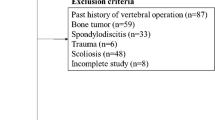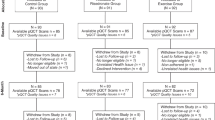Abstract:
We examined 310 hip fracture patients (55 men, 255 women) to identify differences in those patients who had suffered a cervical fracture compared with those with a trochanteric fracture of the hip. Patients underwent a dual-energy X-ray absorptiometry (DXA) scan of their hip and total body and quantitative ultrasound (QUS) scans of their heel. Other measurements included medical/drug history. Significant differences were found for broadband ultrasound attenuation (BUA) and DXA total-body measurements, with those with a cervical fracture having a higher bone mass. Those with a trochanteric fracture showed a significantly higher incidence of stroke (12.8% vs. 6.3%, p = 0.05), while high blood pressure/antihypertensive therapy was significantly more common in the cervical fracture group (11.6% vs. 4.3%, p<0.03). Therefore, it is not only bone parameters that differ in these patients. In the presence of certain medical conditions, preventative therapy may be directed to managing co-existing conditions as well as improving bone density.
Similar content being viewed by others
Author information
Authors and Affiliations
Additional information
Received: 19 March 1998 / Accepted: 5 September 1998
Rights and permissions
About this article
Cite this article
Stewart, A., Porter, R., Primrose, W. et al. Cervical and Trochanteric Hip Fractures: Bone Mass and Other Parameters. Clin Rheumatol 18, 201–206 (1999). https://doi.org/10.1007/s100670050085
Issue Date:
DOI: https://doi.org/10.1007/s100670050085




